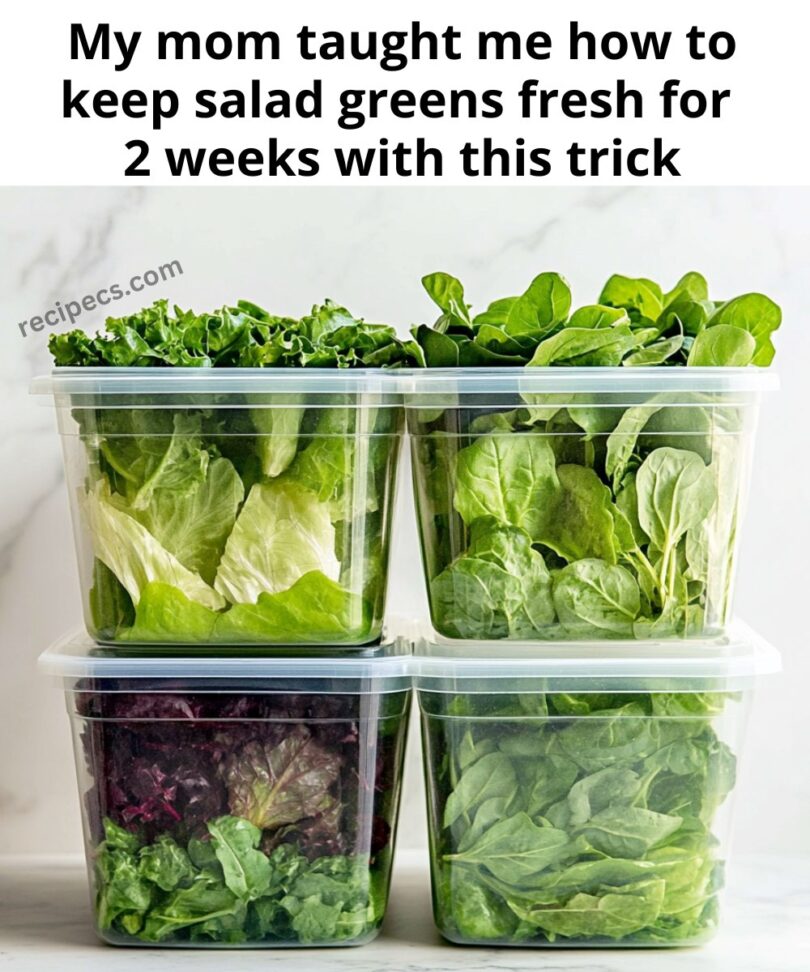ADVERTISEMENT
Step 4: Store in the Fridge’s Crisper Drawer
The crisper drawer in your refrigerator is designed to maintain the optimal humidity for produce, making it the perfect place for your salad greens. Store your greens here to keep them cool and fresh. Be sure to keep the temperature of your fridge at around 35-40°F (1-4°C) to help extend freshness.
Step 5: Check Regularly and Remove Wilted or Damaged Leaves
Even with the best storage techniques, some leaves may spoil faster than others. It’s important to check your salad greens every couple of days and remove any leaves that are wilting, slimy, or turning brown. This helps prevent mold from spreading and keeps the rest of the greens fresh for longer.
Additional Tips to Extend the Life of Salad Greens
- Use a Produce Saver: If you’re storing greens in a bag, consider using a produce saver bag or liner, which is designed to absorb excess moisture and promote airflow, keeping the greens fresher for longer.
- Avoid Storing with Ethylene-Producing Fruits: Certain fruits, like apples, bananas, and avocados, produce ethylene gas, which speeds up the ripening process and can cause your greens to spoil faster. Keep these fruits away from your salad greens in the fridge.
- Freeze for Longer Storage: If you find that you have more salad greens than you can use before they spoil, freezing them is an option. While freezing may alter the texture of the greens, it’s a good way to store them for smoothies or cooked dishes like soups or casseroles. Simply wash, dry, and freeze greens in a single layer on a baking sheet before transferring them to a freezer-safe bag.
- Store Whole Heads of Lettuce: If you bought a whole head of lettuce, such as Romaine or Butterhead, storing it as a whole rather than pre-cut can help it stay fresh for longer. Wrap it in a damp paper towel and place it in a plastic bag or airtight container.
- Spritz with Water: For greens that start to look a bit wilted, spritzing them with a little water can help revive their crispness. Be sure to dry them again to prevent moisture buildup.
Common Mistakes to Avoid
- Storing wet greens: One of the biggest mistakes people make is storing salad greens when they’re still damp. Moisture accelerates wilting and spoilage, so always dry your greens thoroughly before storing.
- Not using paper towels: Without a moisture-absorbing layer like paper towels, your greens will likely become soggy, which shortens their shelf life.
- Overcrowding: Overpacking the container or bag with greens can lead to squashed leaves, which are more likely to rot. Make sure you leave enough space for the greens to breathe.
Conclusion
With the right care and storage techniques, you can easily extend the shelf life of your salad greens and reduce food waste. By properly washing, drying, and storing your greens with the help of paper towels and airtight containers, you can enjoy fresh, crisp lettuce, spinach, arugula, and more throughout the week. These simple steps will ensure that your salad greens stay vibrant, tasty, and ready for your next healthy meal, making it easier to eat fresh, nutritious salads every day. Try these methods and say goodbye to wilted, soggy salad greens!
ADVERTISEMENT
ADVERTISEMENT
